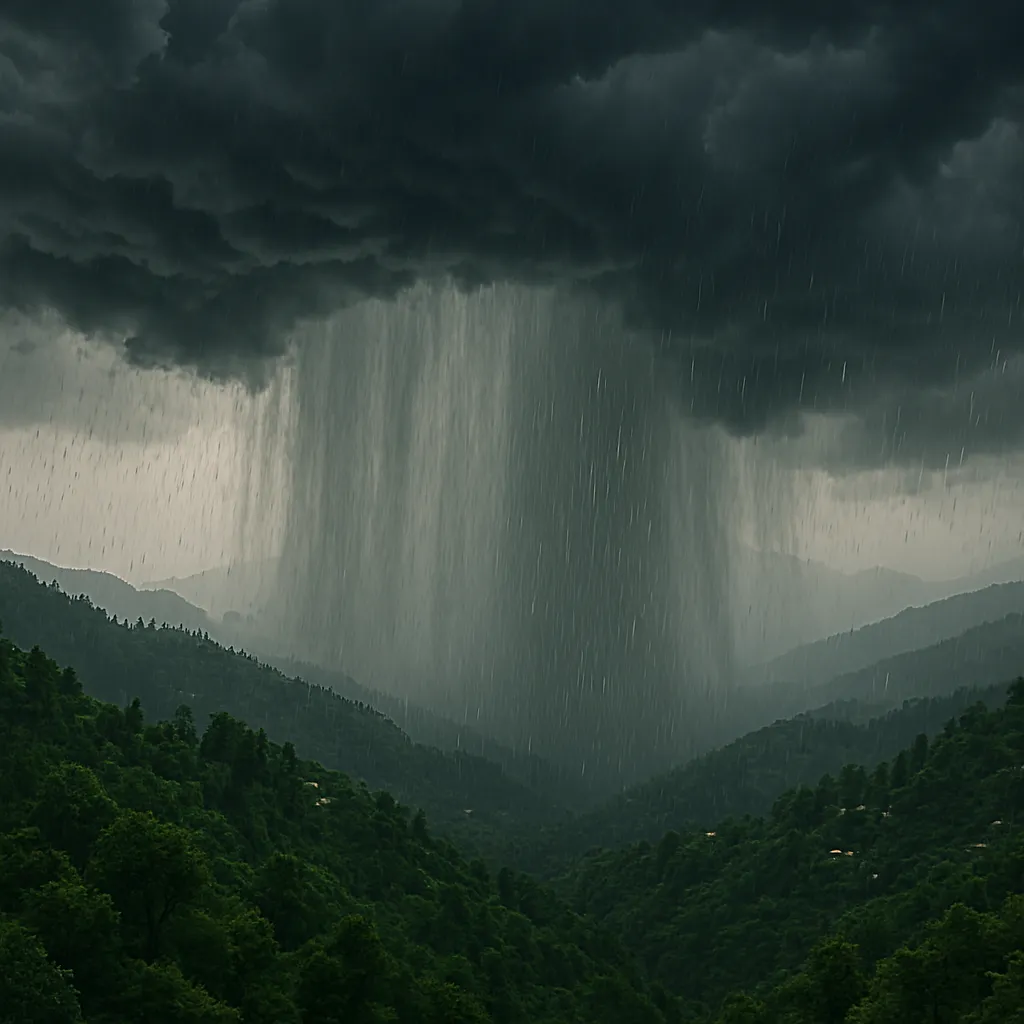Over 38 Lives Lost as Rescue Operations Continue Amid Challenging Conditions
A severe cloudburst in Kishtwar, Jammu and Kashmir, has resulted in flash floods, causing at least 38 fatalities and leaving many injured. Rescue efforts are ongoing as authorities tackle the challenging aftermath of this natural disaster.
A major cloudburst in the Chashoti region of Kishtwar district, Jammu and Kashmir, triggered devastating flash floods on Thursday, leading to at least 38 deaths, with fears that the toll could rise to between 30 and 40. The incident occurred along the route of the ongoing Machail Mata Yatra, where a large number of pilgrims and persistent rainfall exacerbated the situation.
Authorities reported that over 250 people were present at the site when the cloudburst struck. Rescue teams are working tirelessly at the location. Currently, between 100 and 150 individuals have been injured, and efforts are underway to evacuate those trapped and provide medical assistance.
Officials stated that the flash floods flooded a parking area, a langar (community kitchen), and a CRPF camp, causing several individuals to be buried under debris. Rescue operations are ongoing, but challenging weather conditions and damaged roads are hindering efforts. The Army has taken part in relief and rescue activities.
A spokesperson from the Army in Jammu mentioned that the White Knight formation's troops were swiftly deployed to save lives and assist survivors, with ongoing search efforts for the missing. Supplies, medical teams, and rescue equipment have also been sent to the area.
Cloudbursts occur when moist air rapidly rises, cools, and condenses in a very localised area, resulting in a sudden and intense downpour of rain. This phenomenon is often associated with mountainous regions, where the terrain promotes the quick lifting of air. When the air cools at higher altitudes, it can lead to the formation of cumulonimbus clouds, which can release an extraordinary amount of rainfall over a short period, sometimes exceeding several inches within minutes.
The Himalayan region has become increasingly vulnerable to cloudbursts and the resulting flash floods due to several factors. First, climate change has led to erratic and intense weather patterns, which can increase the frequency and intensity of such extreme events. The increasing temperatures also contribute to glacial melt, which can modify local hydrology and exacerbate flooding risks.
Additionally, the rapid urbanisation and development in these areas often replace natural landscapes with impermeable surfaces, reducing the land's ability to absorb rainfall. Deforestation and land degradation further heighten vulnerability by disrupting the stability of slopes, leading to landslides when heavy rainfall occurs. The combination of these factors makes the Himalayan region particularly susceptible to the devastating impacts of cloudbursts and flash floods.
Also Read: Tragedy in Kishtwar
#KishtwarFloods #Cloudburst #NaturalDisaster #JammuAndKashmir #RescueOperations #ClimateChange #FlashFloods #Tragedy

